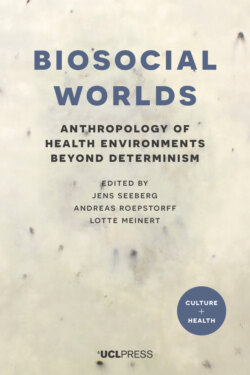Читать книгу Biosocial Worlds - Группа авторов - Страница 29
На сайте Литреса книга снята с продажи.
Social isolation
ОглавлениеResearch carried out with Romanian children living in orphanages has made clear that a paucity of social relations can bring about significant lifelong harm that may well have intergenerational effects (Nelson et al. 2013). A randomised clinical trial was carried out in which over 60 orphans aged between eight and nine were moved into good foster-care homes, at the expense of the involved researchers from the US, while a control group of similar size was left to languish in the orphanage. The study demonstrated, perhaps not surprisingly, that foster care was much more effective for the wellbeing and development, mental and physical, of these young children than was the orphanage setting in which a single adult may be responsible for 12 to 15 children. But of particular interest were findings that, as compared with never-institutionalised children, the orphaned children exhibited less development in both the grey and white matter in their brains. Foster placement quickly improved development of white matter, although grey matter development did not recover. Furthermore, the majority of institutionalised children showed shorter telomere lengths. As Elizabeth Blackburn, who has worked her whole life on telomeres, has argued, short telomeres ‘powerfully quantify life’s insults’ (Blackburn and Epel 2012, 170). These findings were communicated to the Romanian government. Efforts to map the molecular epigenetics pathways of these findings, and those obtained from other orphanages, are now underway with some success (Naumova et al. 2012). Longitudinal ethnographic research could enrich these findings greatly, and has the potential to influence policy making.
Charles Nelson, a cognitive neuroscientist, has carried out research in Bangladesh and reports that ‘the level of poverty is mind-boggling’ (Hamzelou 2016). He notes that a family of five often lives in a single room; kitchens and bathrooms are communal for an entire compound; latrines flood during the long monsoon season; people cook with wood or coal and the pollution is, as Nelson puts it, ‘unbelievable’. What is more, dirt blows everywhere from unpaved tracks, and the sewers are open. Nelson states emphatically, ‘the polite way to put it is that stool gets into everything … virtually all the children have chronic diarrhoea, which leads to malnourishment and stunting; up to 30 per cent of the mothers are visibly depressed, and high levels of domestic violence exist’. Nelson made a rule that his team must not cry in front of the children. They witnessed tiny babies left to cry in their sodden cribs, and were informed that they were rarely picked up and held (Hamzelou 2016). Neuroimaging research is now underway in a new centre constructed at great expense in Dhaka designed to track the brain development of these children.
